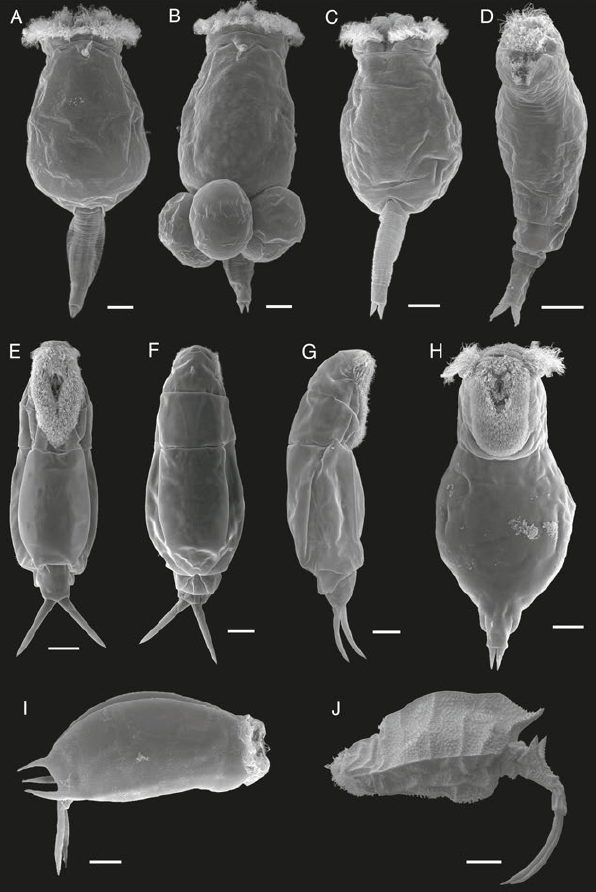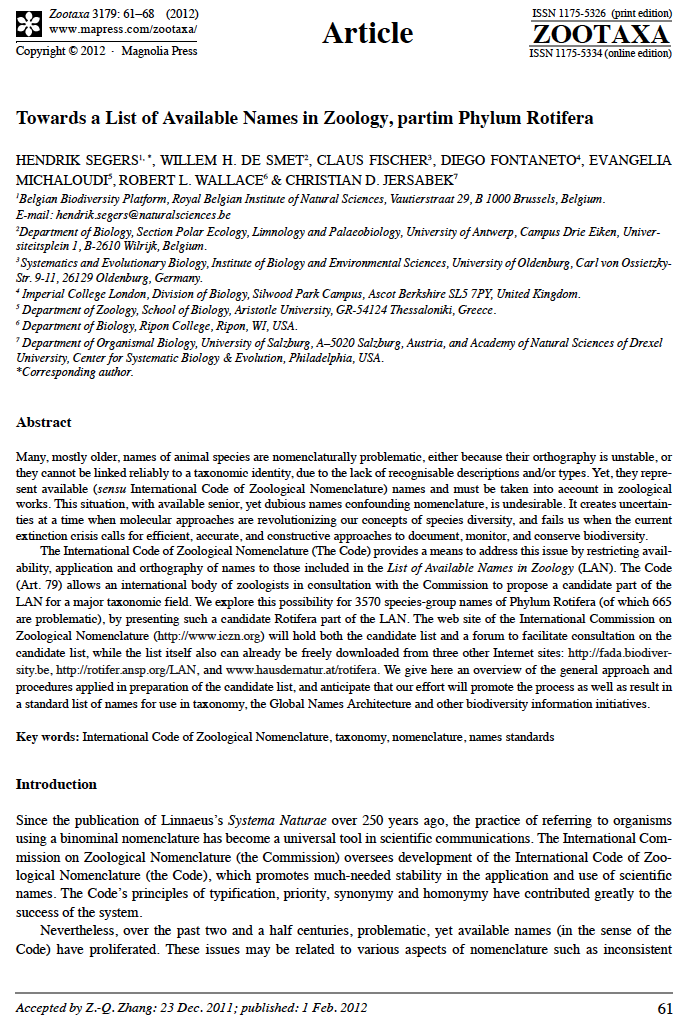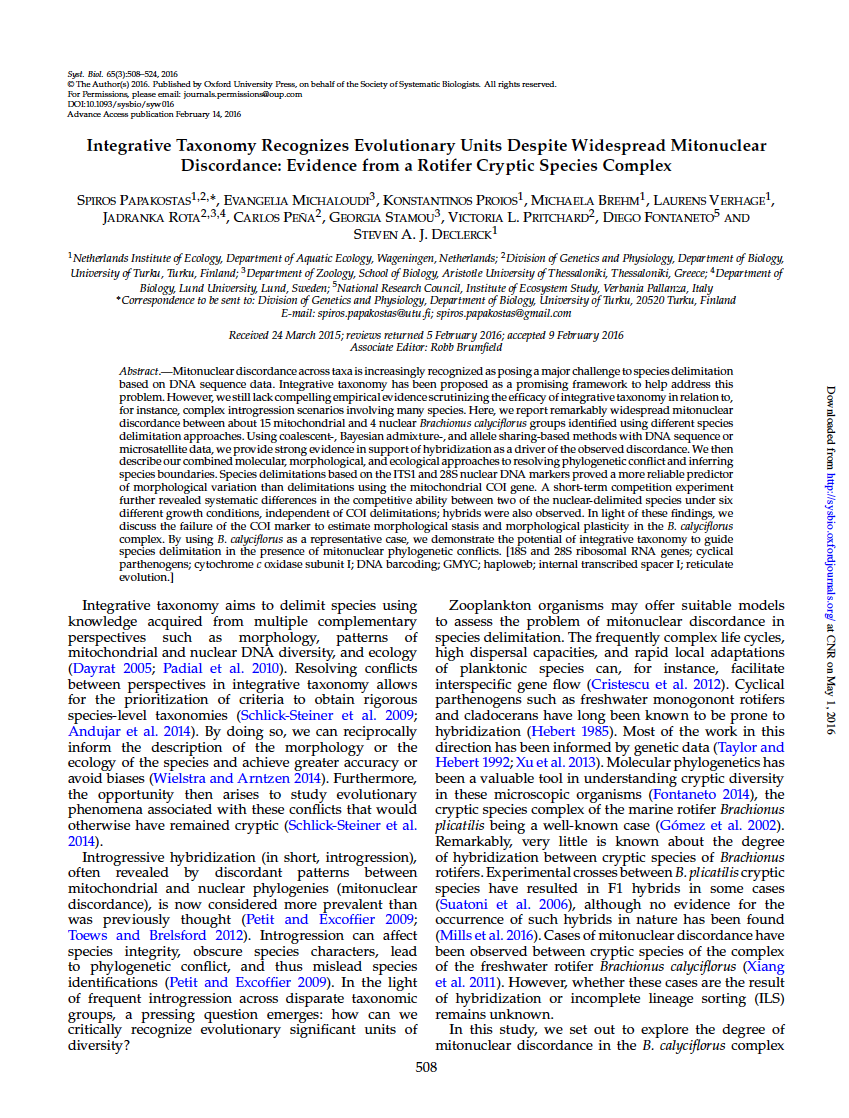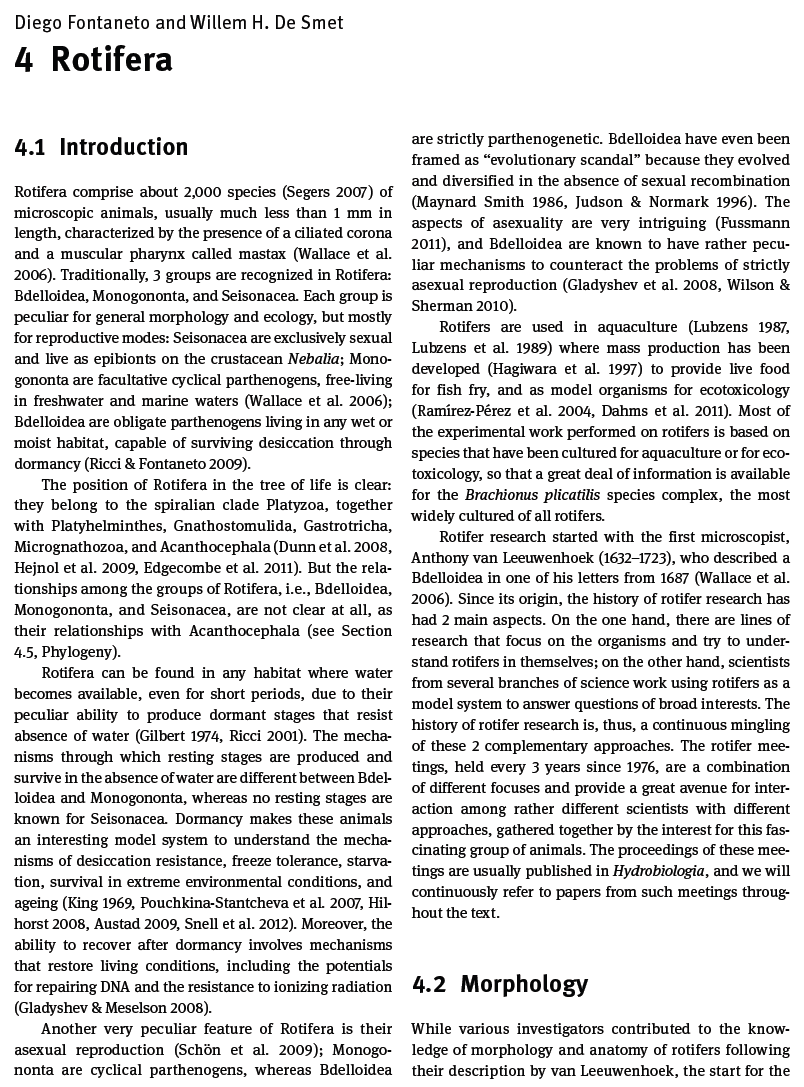Rotifera systematics
 Rotifera comprise about 2,000 species of microscopic animals, usually much less than 1 mm in length, characterized by the presence of a ciliated corona and a muscular pharynx (called mastax) with hard jaws (called trophi).
Rotifera comprise about 2,000 species of microscopic animals, usually much less than 1 mm in length, characterized by the presence of a ciliated corona and a muscular pharynx (called mastax) with hard jaws (called trophi).
Traditionally, 3 groups are recognized in Rotifera: Bdelloidea, Monogononta, and Seisonacea. Each group is peculiar for general morphology and ecology, but mostly for reproductive modes: Seisonacea are exclusively sexual and live as epibionts on the crustacean Nebalia; Monogononta are facultative cyclical parthenogens, free-living in freshwater and marine waters; Bdelloidea are obligate parthenogens living in any wet or moist habitat, capable of surviving desiccation through dormancy. Acanthocephala are also nowadays recognised as a highly divergent group of rotifers, adapted to parasitic lifestyle.
We work on different aspects of systematics, taxonomy, and faunistics of rotifers. Click on the frontpages to access recent articles and book chapters on the topic.


